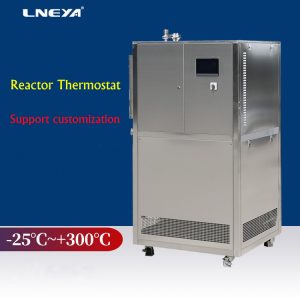Semiconductor probe cooling chiller system
Semiconductor probe chiller, also known as semiconductor testing chiller or semiconductor testing cooling system, is a device designed to provide precise temperature control for semiconductor testing environments.
It plays a crucial role in the testing process of semiconductor chips, especially in wafer level testing, post packaging testing, and fault analysis. The following is an overview of its main features and applications:
Functional features:
- Temperature control: The chiller provides precise temperature control, typically ranging from -40 ° C to over 100 ° C, or even wider, to meet different testing temperature requirements.
2. Stability: The temperature stability of the chiller is extremely high, ensuring minimal fluctuations during the testing process and avoiding temperature fluctuations that may affect the test results.
3. Quick response: The chiller quickly reaches the set temperature and can be adjusted quickly, reducing waiting time and improving testing efficiency.
4. Silence and energy-saving: The probe station chiller is designed to operate with low noise and energy efficiency to reduce energy consumption.
5. Intelligence: Automatic control system for probe chiller, including remote monitoring, alarm, data recording, and fault diagnosis.
Application:
- Chip testing: In semiconductor wafer testing, the probe stage chiller is used to cool the wafer, control the testing environment, and ensure the stability of the equipment and DUT or HTOLBIST (High Temperature Storage Test) during high temperature testing.
2. Packaging testing: In the post packaging testing (FT) stage of semiconductor packaging, the chiller is also used to maintain the testing temperature and ensure the performance of the chip during high-power testing or high-temperature operation.
3. Fault analysis: In semiconductor fault analysis, the chiller helps to simulate specific temperature conditions, analyze the performance of the chip at different temperatures, and identify the cause of the fault.
4. Aging test: In the accelerated aging test of semiconductors, the chiller provides a stable high-temperature environment, accelerates the chip aging process, and quickly verifies its long-term reliability.
5. Environmental simulation: In environmental testing, semiconductors simulate various temperature conditions to ensure that the chip performs in extreme environments and meets design standards.
In summary, the semiconductor probe chiller is an important auxiliary equipment in the semiconductor testing process, ensuring the accuracy and efficiency of testing, especially in temperature sensitive testing environments and reliability verification. It is indispensable.
Related recommendations
-
Multi-stage refrigeration small temperature control compressor description
1640The function of the compressor in the multi-stage refrigeration small temperature control station system is to draw the refrigerant vapor of the evaporator and increase its temperature and pressure, which is discharged into the condenser. In the c...
View details -
Temperature shock test chamber failure performance description
1504The temperature shock test chamber is widely used in various major industries. When users purchase, they hope that their temperature impact test chamber can be used for a long time. Therefore, it is necessary to understand each fault of the temper...
View details -
How to use the reactor thermostat?
1539The reactor thermostat is generally heated by a resistance wire, cooled by a compressor, and is supplemented with a PID controller to maintain a relatively standard temperature, so as to achieve the purpose of the experiment. The shell is made of ...
View details -
Multi-stage refrigeration system centrifugal compressor repair instructions
2044After the centrifugal compressor of the cascade refrigeration system is disassembled, the dimensions of each journal (cooperating with the impeller, bearing, coupling, etc.) are measured with an outer diameter micrometer to calculate the roundness...
View details
 LNEYA Industrial Chillers Manufacturer Supplier
LNEYA Industrial Chillers Manufacturer Supplier














